



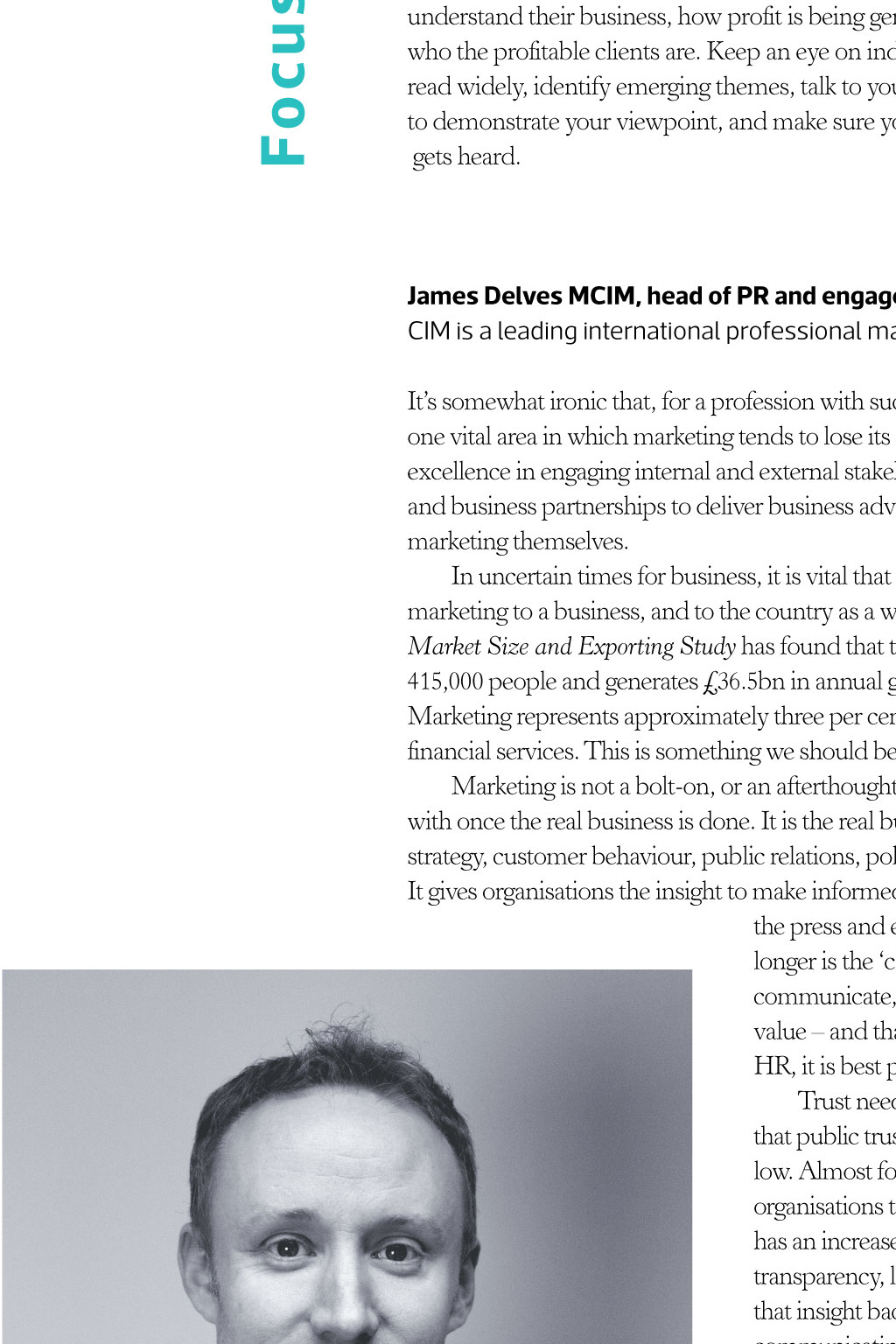
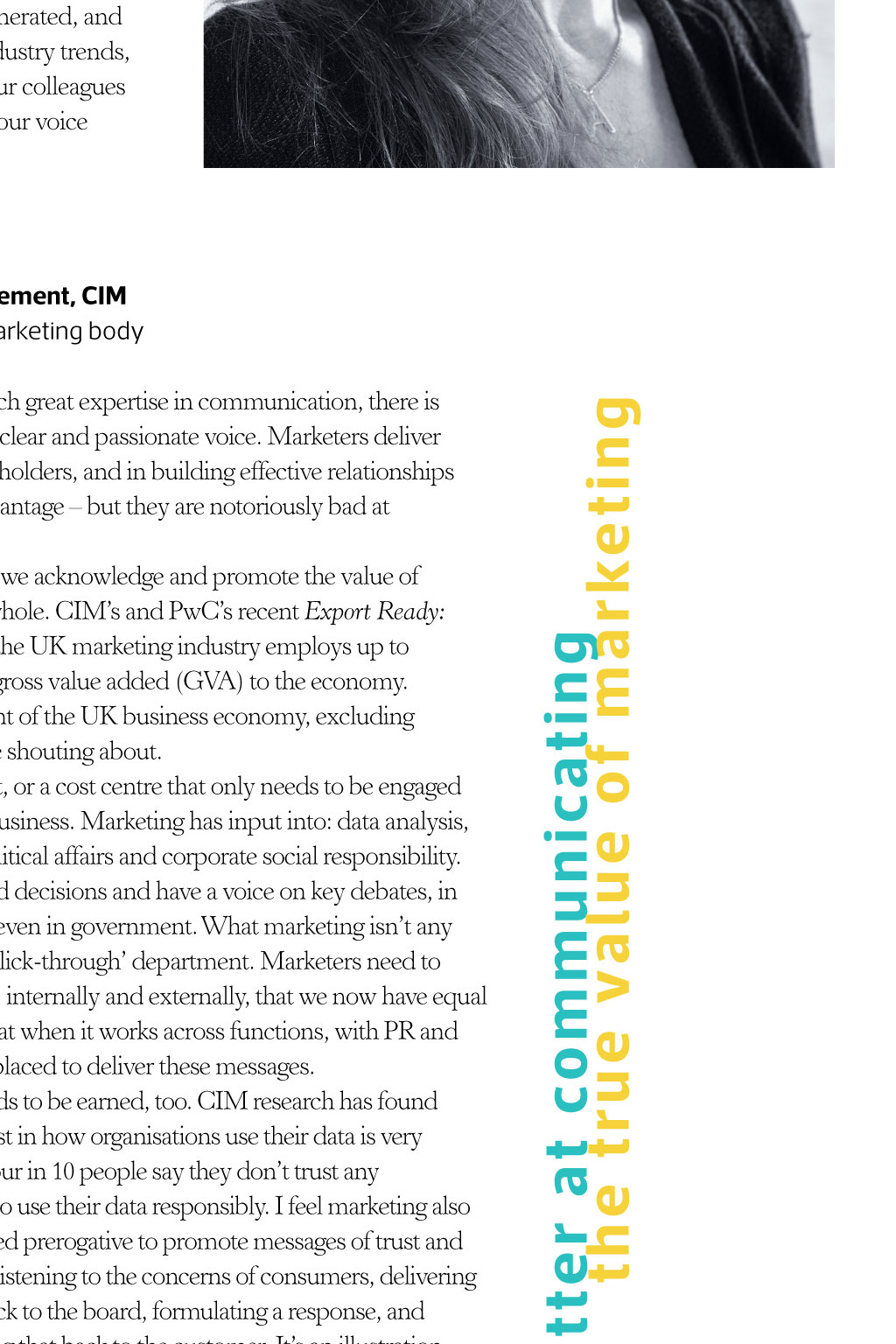
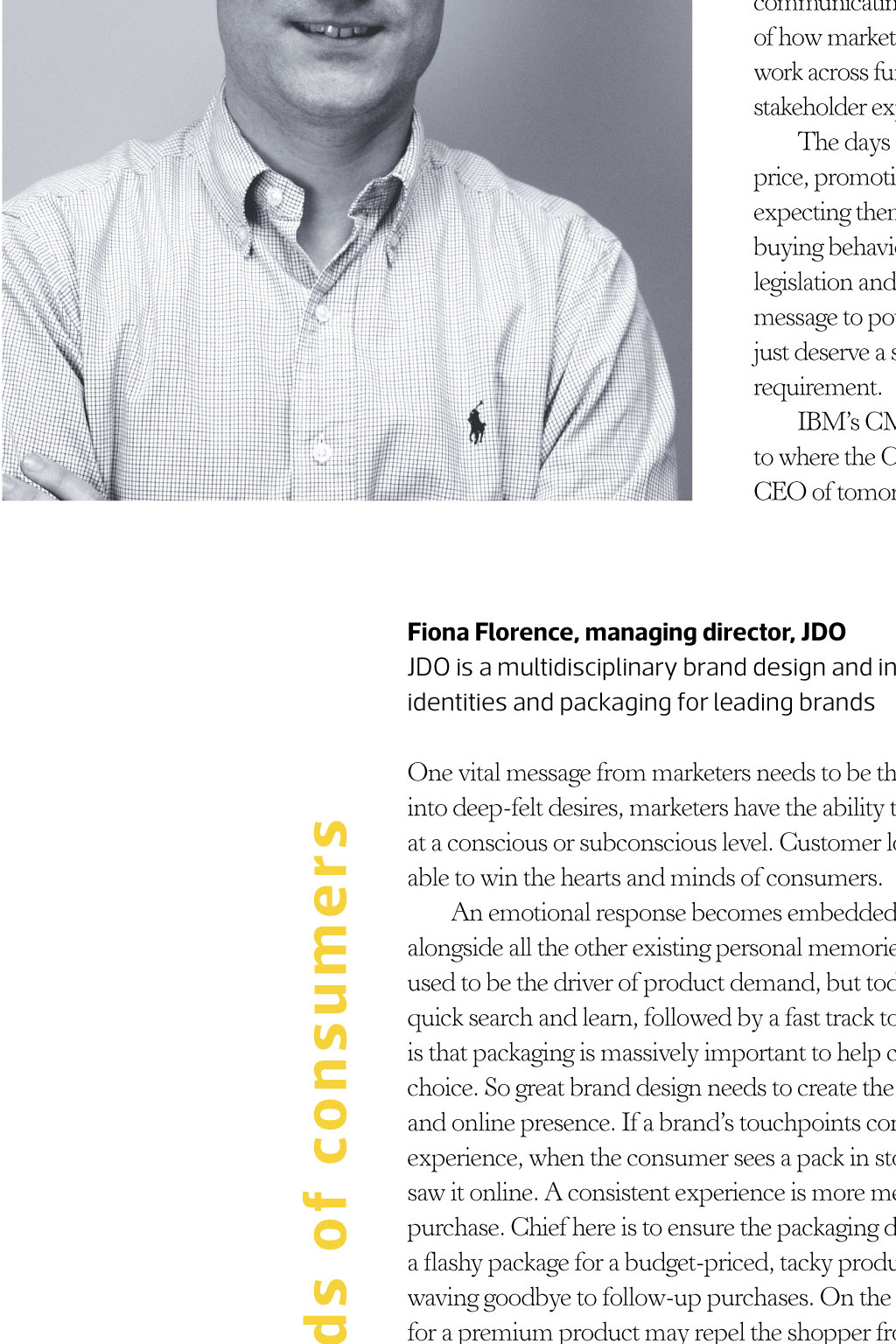

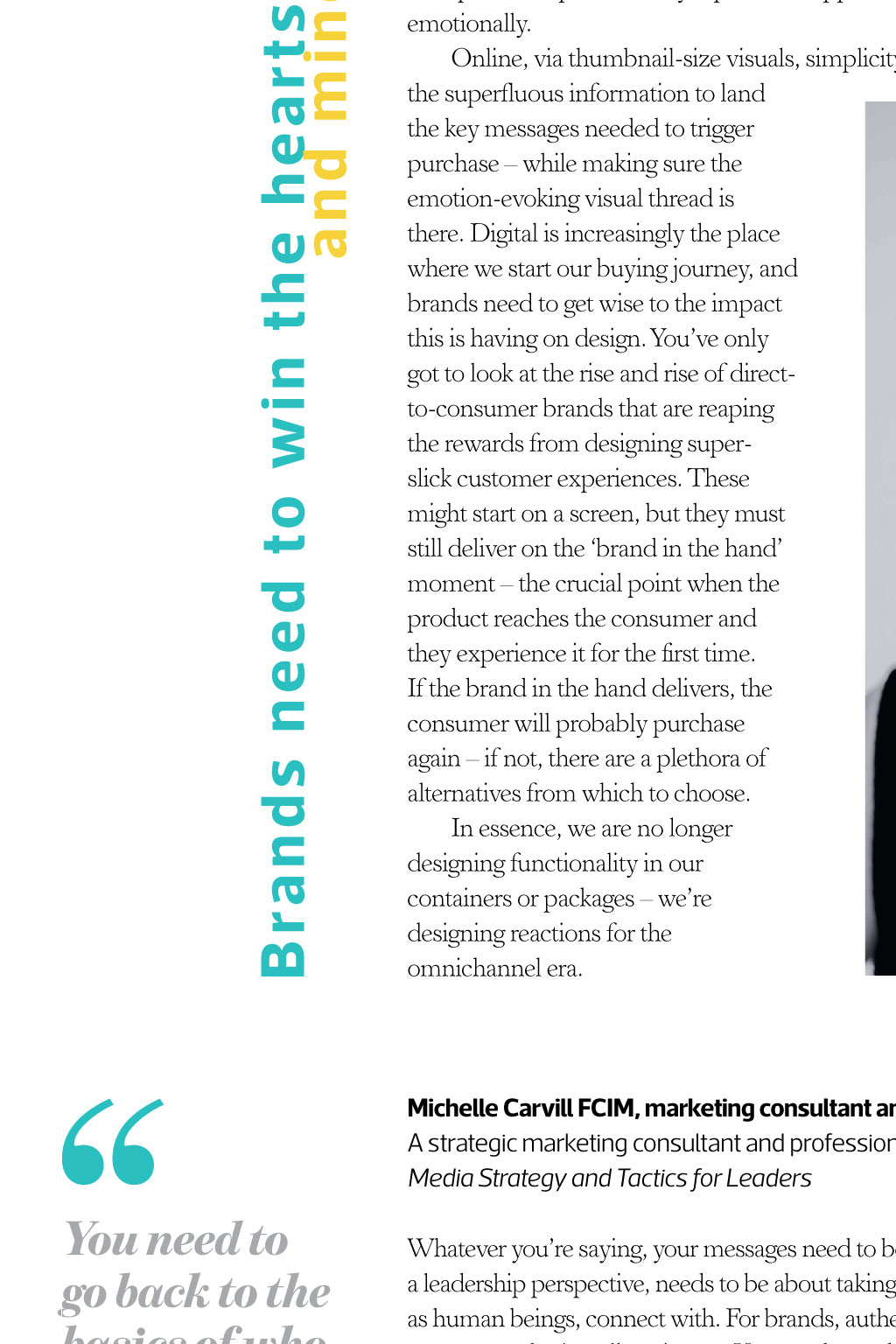
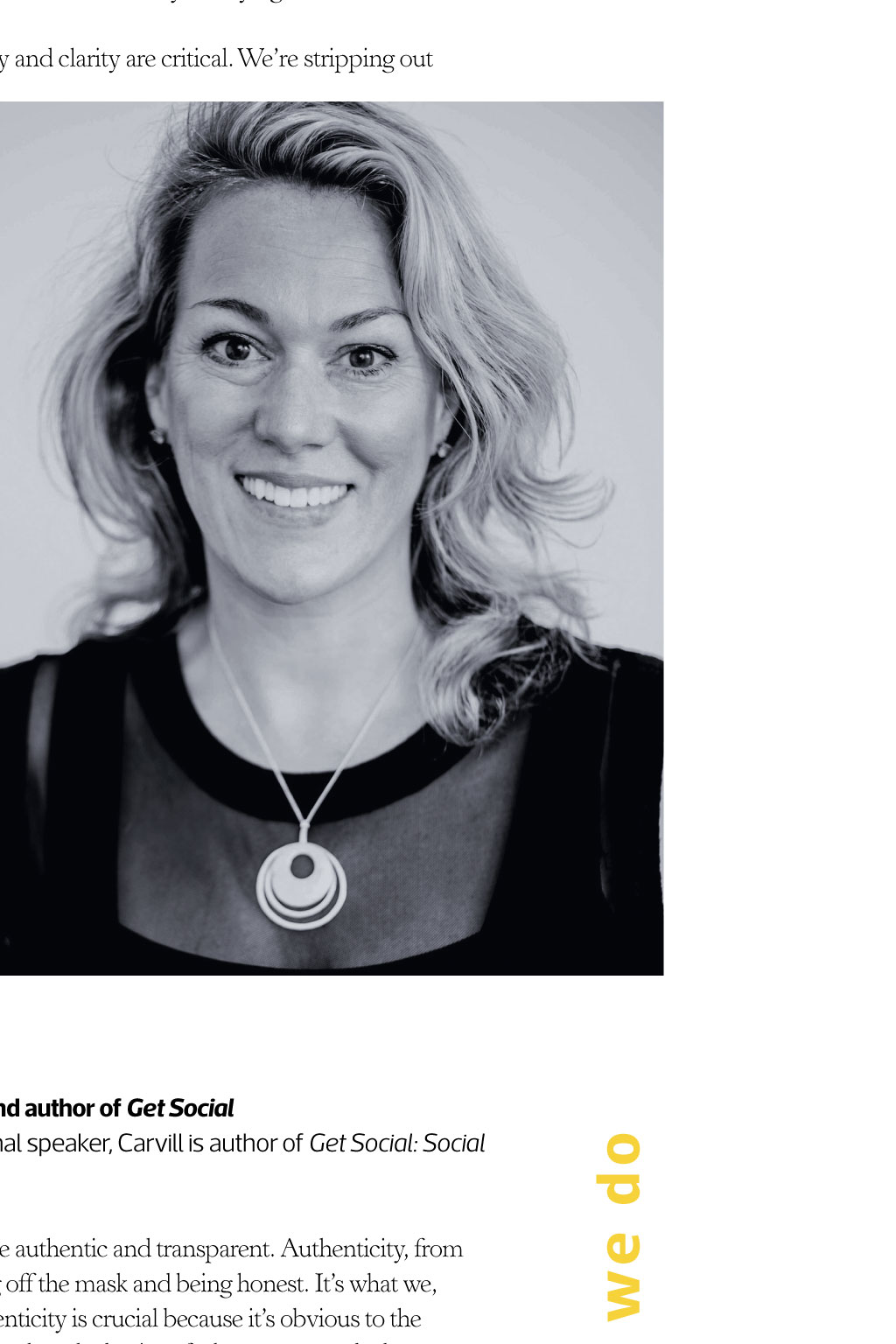
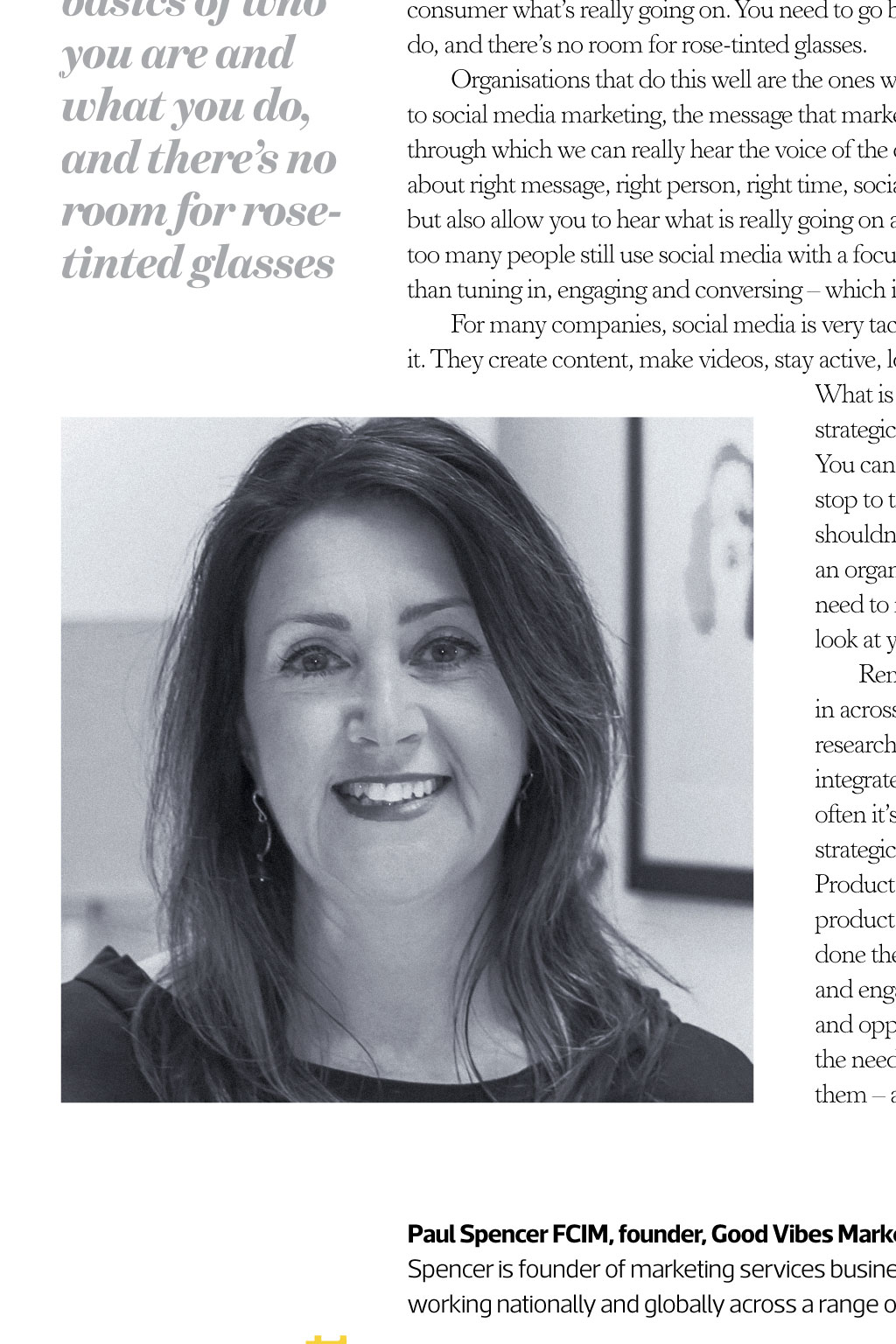
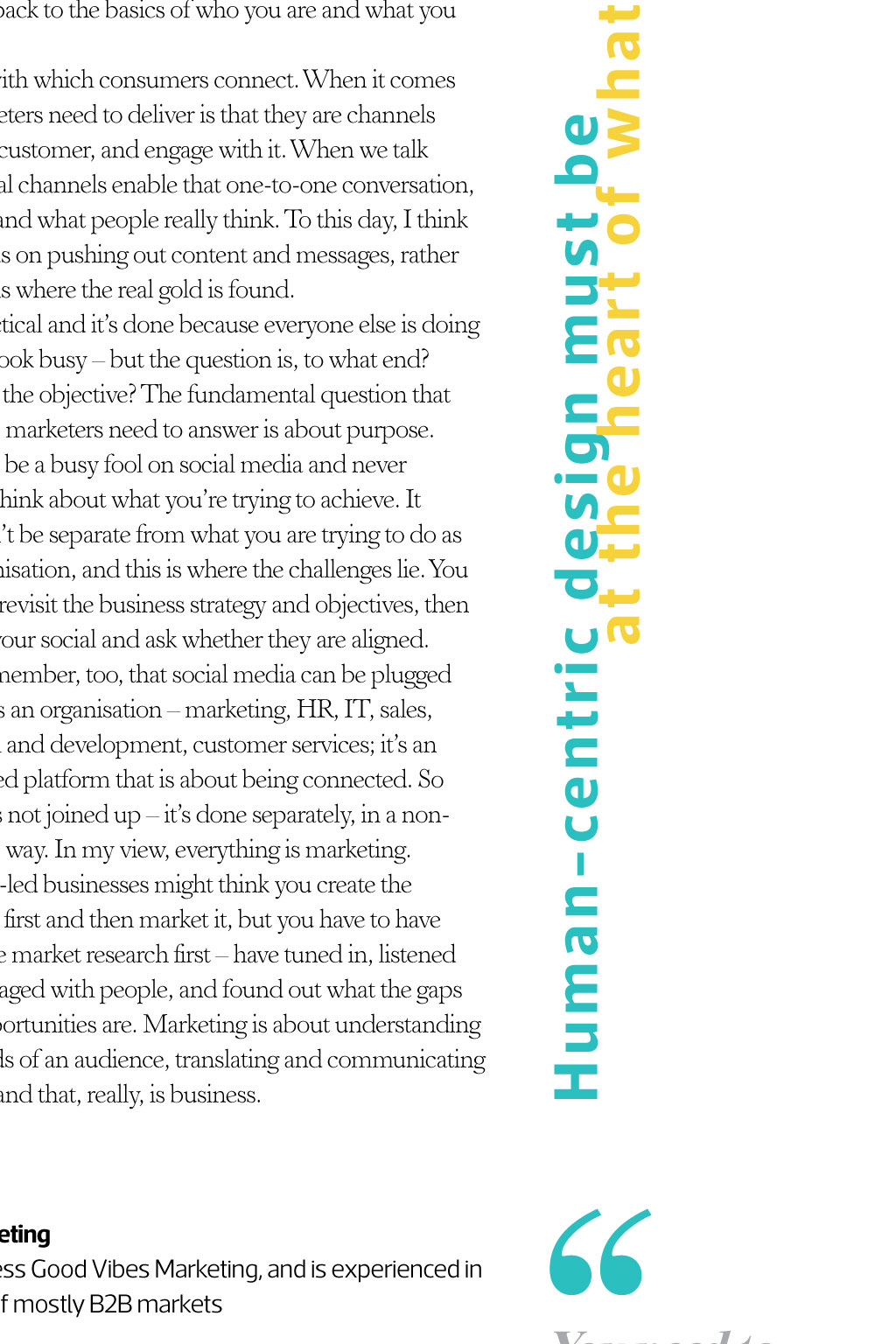
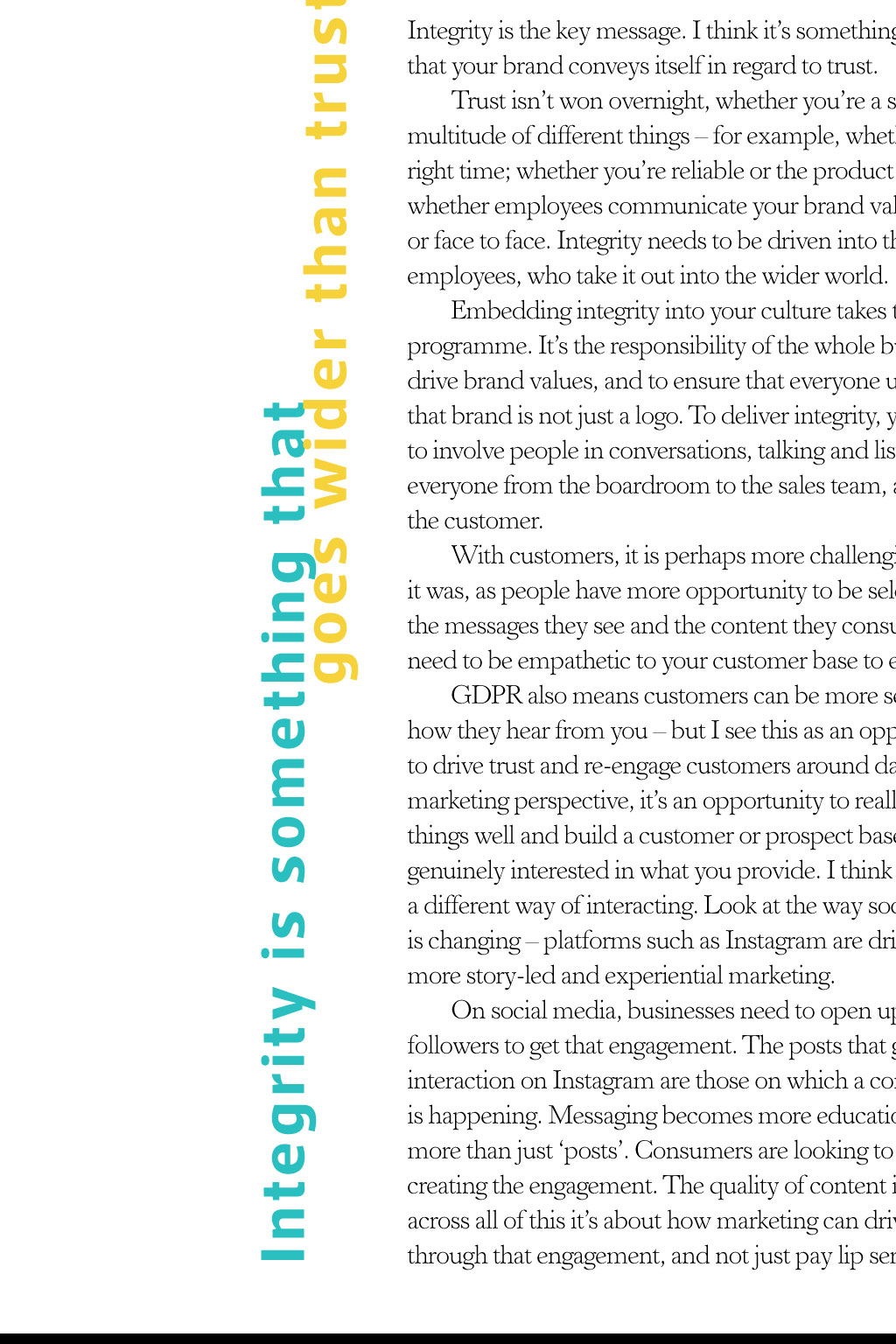
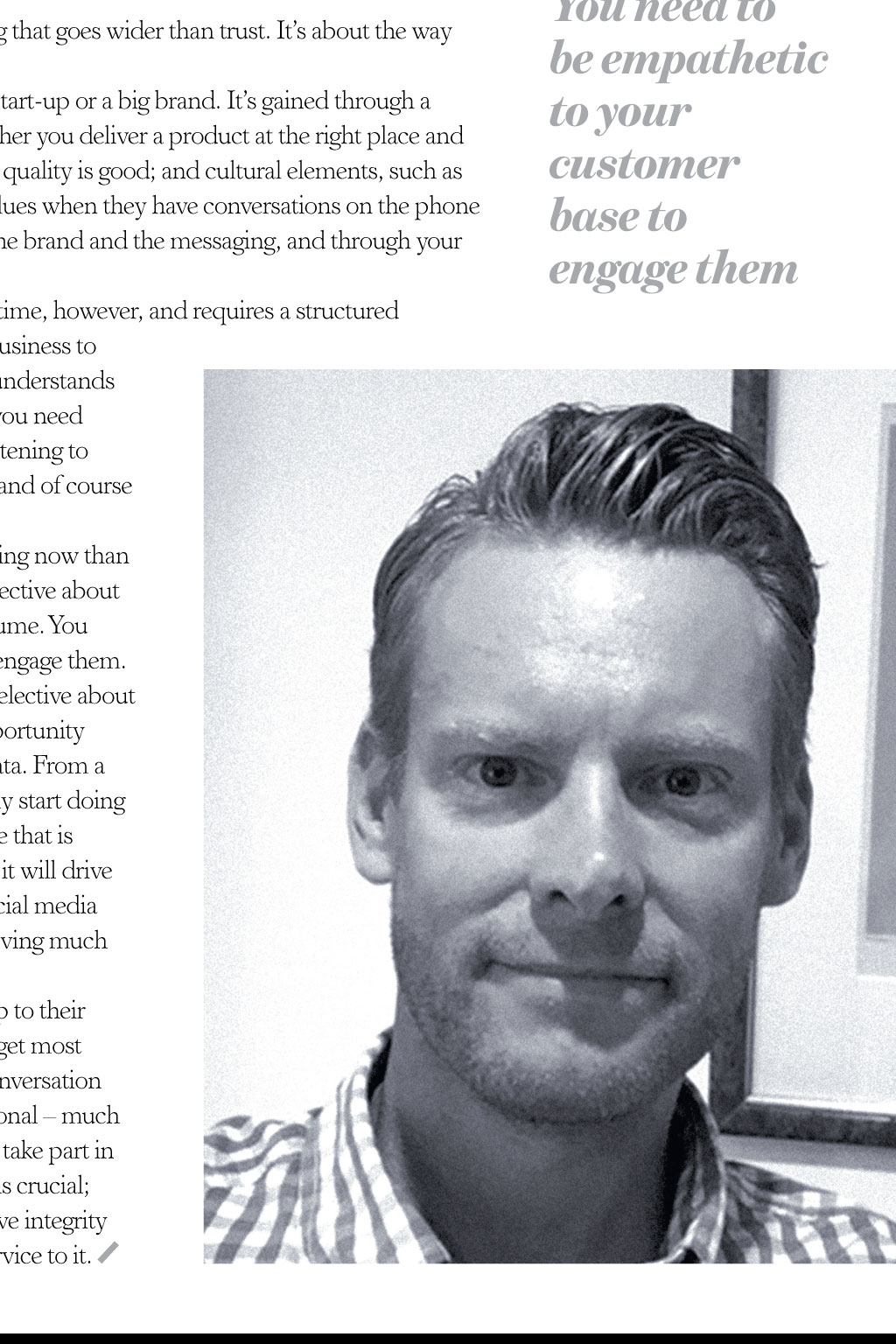



















What is marketings most important message? Marketing speaks to, and for, many people. It inputs to conversations across disciplines, from sales and customer care, to IT and HR, and from research and development to corporate social responsibility programmes. It is the ear of the boardroom and of the customer, and plays the role of messenger between the two. It does this across all touchpoints and channels through the sales funnel and beyond, in face-to-face meetings and through advertising campaigns on traditional media and evolving new channels. Creating and delivering relevant and timely messages is marketings principal skill set. Yet, in the granular detail of the day to day, and efforts in tactical planning, the big picture sometimes becomes obscured. What is the most important message marketing should be delivering about itself, and how best can it get that message across? We asked five senior marketers for their view of how to define and communicate marketings big message. InterviewS: Martin Bewick Focus on the benefits you provide,rather than produc ts Catalyst asks The big question Anouschka Elliott FCIM, global head of marketing and brand, RBC I&TS RBC Investor & Treasury Services is a specialist provider of services for financial and other institutional investors worldwide The message needs to be about the value marketing can bring. Often, we think in terms of marketing communications, but it needs to come from a more strategic viewpoint. As marketers, we frequently focus on the day to day, but we also need to have the foresight to identify emerging themes, and to advise our boards accordingly, to make sure we have sustainability within the business. Thats a very different place to the one in which many people see marketing. This needs to be communicated internally, and externally with our clients. We need to demonstrate that we have vision and are focusing on the benefits we provide for them, rather than simply a specific product or feature. In our industry, financial services, weve seen huge disruption over the past few years because of technological change. Data analytics, blockchain and artificial intelligence have come our way, and consumer behaviour has changed too. It reminds us that you need to have an eye on the long term, as the world is going to be a very different place. Through the analysis we do in building our strategies, we need to find the nuggets of insight that can help an organisation through changing times. We cant be myopic and we need to be able to evolve; weneed to look outside of the organisation and bring that external lens in. We need to be client-centric and take clients on the journey with us. Our clients work with us to develop new products and services and, often, they dont know what theyre looking for either. But were on the journey together and we embrace the relationship we have withthem. Its about goingbeyondbeing a service provider and becoming a strategic partner. It produces a much stickier relationship, with more longevity, and this helps to bring about a much more stable organisation. In our communications with clients, we express this longer-term view by focusing on content and thought leadership, which lets our clients really understand our perspective. Stick to the basics, too marketers need to really understand their business, how profit is being generated, and who the profitable clients are. Keep an eye on industry trends, read widely, identify emerging themes, talk to your colleagues to demonstrate your viewpoint, and make sure your voice gets heard. Got any suggestions for topics for Catalyst Asks features? If so, or you are interested in contributing, email editorial@cim.co.uk Fiona Florence, managing director, JDO JDO is a multidisciplinary brand design and innovation company, which has designed identities and packaging for leading brands One vital message from marketers needs to be that emotion is an amplifying force. By tapping into deep-felt desires, marketers have the ability to design a reaction among consumers whether at a conscious or subconscious level. Customer loyalty and repeat sales depend on a brand being able to win the hearts and minds of consumers. An emotional response becomes embedded as a cognitive process; it takes its place alongside all the other existing personal memories and associations swirling around it. Ads used to be the driver of product demand, but todays new customer journeys often start with a quick search and learn, followed by a fast track to the till. The one thing that remains constant is that packaging is massively important to help consumers navigate their way through all the choice. So great brand design needs to create the visual thread that connects a brands offline and online presence. If a brands touchpoints connect to create an impactful and potent brand experience, when the consumer sees a pack in store they will remember how they felt when they saw it online. A consistent experience is more memorable and compelling, which helps drive purchase. Chief here is to ensure the packaging design delivers upon the promise. If you have a flashy package for a budget-priced, tacky product, it will leave the customer feeling deceived, waving goodbye to follow-up purchases. On the other hand, having tacky, budget packaging for a premium product may repel the shopper from the brand they are trying to connect with emotionally. Online, via thumbnail-size visuals, simplicity and clarity are critical. Were stripping out the superfluous information to land the key messages needed to trigger purchase while making sure the emotion-evoking visual thread is there. Digital is increasingly the place where we start our buying journey, and brands need to get wise to the impact this is having on design. Youve only got to look at the rise and rise of direct-to-consumer brands that are reaping the rewards from designing super-slick customer experiences. These might start on a screen, but they must still deliver on the brand in the hand moment the crucial point when the product reaches the consumer and they experience it for the first time. If the brand in the hand delivers, the consumer will probably purchase again if not, there are a plethora of alternatives from which tochoose. In essence, we are no longer designing functionality in our containers or packages were designing reactions for the omnichannel era. Michelle Carvill FCIM, marketing consultant and author of Get Social A strategic marketing consultant and professional speaker, Carvill is author of Get Social: Social Media Strategy and Tactics for Leaders You need to go back to the basics of who you are and what you do, and theres no room for rosetinted glasses Whatever youre saying, your messages need to be authentic and transparent. Authenticity, from a leadership perspective, needs to be about taking off the mask and being honest. Its what we, as human beings, connect with. For brands, authenticity is crucial because its obvious to the consumer whats really going on. You need to go back to the basics of who you are and what you do, and theres no room for rose-tinted glasses. Organisations that do this well are the ones with which consumers connect. When it comes to social media marketing, the message that marketers need to deliver is that they are channels through which we can really hear the voice of the customer, and engage with it. When we talk about right message, right person, right time, social channels enable that one-to-one conversation, but also allow you to hear what is really going on and what people really think. To this day, I think too many people still use social media with a focus on pushing out content and messages, rather than tuning in, engaging and conversing which is where the real gold is found. For many companies, social media is very tactical and its done because everyone else is doing it. They create content, make videos, stay active, look busy but the question is, to what end? What is the objective? The fundamental question that strategic marketers need to answer is about purpose. You can be a busy fool on social media and never stop to think about what youre trying to achieve. It shouldnt be separate from what you are trying to do as an organisation, and this is where the challenges lie. You need to revisit the business strategy and objectives, then look at your social and ask whether they are aligned. Remember, too, that social media can be plugged in across an organisation marketing, HR, IT, sales, research and development, customer services; its an integrated platform that is about being connected. So often its not joined up its done separately, in a nonstrategic way. In my view, everything is marketing. Product-led businesses might think you create the product first and then market it, but you have to have done the market research first have tuned in, listened and engaged with people, and found out what the gaps and opportunities are. Marketing is about understanding the needs of an audience, translating and communicating them and that, really, is business. Human- centric design must be at the hear t of what we do Brands need to win the hear ts and minds of consumers Its somewhat ironic that, for a profession with such great expertise in communication, there is one vital area in which marketing tends to lose its clear and passionate voice. Marketers deliver excellence in engaging internal and external stakeholders, and in building effective relationships and business partnerships to deliver business advantage but they are notoriously bad at marketing themselves. In uncertain times for business, it is vital that we acknowledge and promote the value of marketing to a business, and to the country as a whole. CIMs and PwCs recent Export Ready: Market Size and Exporting Study has found that the UK marketing industry employs up to 415,000 people and generates 36.5bn in annual gross value added (GVA) to the economy. Marketing represents approximately three per cent of the UK business economy, excluding financial services. This is something we should be shouting about. Marketing is not a bolt-on, or an afterthought, or a cost centre that only needs to be engaged with once the real business is done. It is the real business. Marketing has input into: data analysis, strategy, customer behaviour, public relations, political affairs and corporate social responsibility. It gives organisations the insight to make informed decisions and have a voice on key debates, in the press and even in government. What marketing isnt any longer is the click-through department. Marketers need to communicate, internally and externally, that we now have equal value and that when it works across functions, with PR and HR, it is best placed to deliver these messages. Trust needs to be earned, too. CIM research has found that public trust in how organisations use their data is very low. Almost four in 10 people say they dont trust any organisations to use their data responsibly. I feel marketing also has an increased prerogative to promote messages of trust and transparency, listening to the concerns of consumers, delivering that insight back to the board, formulating a response, and communicating that back to the customer. Its an illustration of how marketing must deliver end-to-end comms, and work across functions to produce a consistent customer and stakeholder experience. The days of campaigns just built on the four Ps (product, price, promotion, place) and pushed to the sales team and expecting them to deliver results is dead. Complex consumer buying behaviour patterns, fast-moving markets, political legislation and a host of channels to communicate your message to potential customers means marketing doesnt just deserve a seat on the board, it should be a fundamental requirement. IBMs CMO, Lisa Gilbert once said she could see a path to where the CMO of today will be a viable candidate for the CEO of tomorrow I couldnt agree more. We must get bet ter at communicating the true value of marketing James Delves MCIM, head of PR and engagement, CIM CIM is a leading international professional marketing body. Integrit y is something that goes wider than trust Paul Spencer FCIM, founder, Good Vibes Marketing Spencer is founder of marketing services business Good Vibes Marketing, and is experienced in working nationally and globally across a range of mostly B2B markets Integrity is the key message. I think its something that goes wider than trust. Its about the way that your brand conveys itself in regard to trust. Trust isnt won overnight, whether youre a start-up or a big brand. Its gained through a multitude of different things for example, whether you deliver a product at the right place and right time; whether youre reliable or the product quality is good; and cultural elements, such as whether employees communicate your brand values when they have conversations on the phone or face to face. Integrity needs to be driven into the brand and the messaging, and through your employees, who take it out into the wider world. Embedding integrity into your culture takes time, however, and requires a structured programme. Its the responsibility of the whole business to drive brand values, and to ensure that everyone understands that brand is not just a logo. To deliver integrity, you need to involve people in conversations, talking and listening to everyone from the boardroom to the sales team, and of course the customer. With customers, it is perhaps more challenging now than it was, aspeople have more opportunity to be selective about the messages they see and the content they consume. You need to be empathetic to your customer base to engage them. GDPR also means customers can be more selective about how they hear from you but I see this as an opportunity to drive trust and re-engage customers around data. From a marketing perspective, its an opportunity to really start doing things well and build a customer or prospect base that is genuinely interested in what you provide. I think it will drive a different way of interacting. Look at the way social media is changing platforms such as Instagram are driving much more story-led and experiential marketing. On social media, businesses need to open up to their followers to get that engagement. The posts that get most interaction on Instagram are those on which a conversation is happening. Messaging becomes more educational much more than just posts. Consumers are looking to take part in creating the engagement. The quality of content is crucial; across all of this its about how marketing can drive integrity through that engagement, and not just pay lip service to it. cim.co.uk/exchange You need to be empathetic to your customer base to engage them